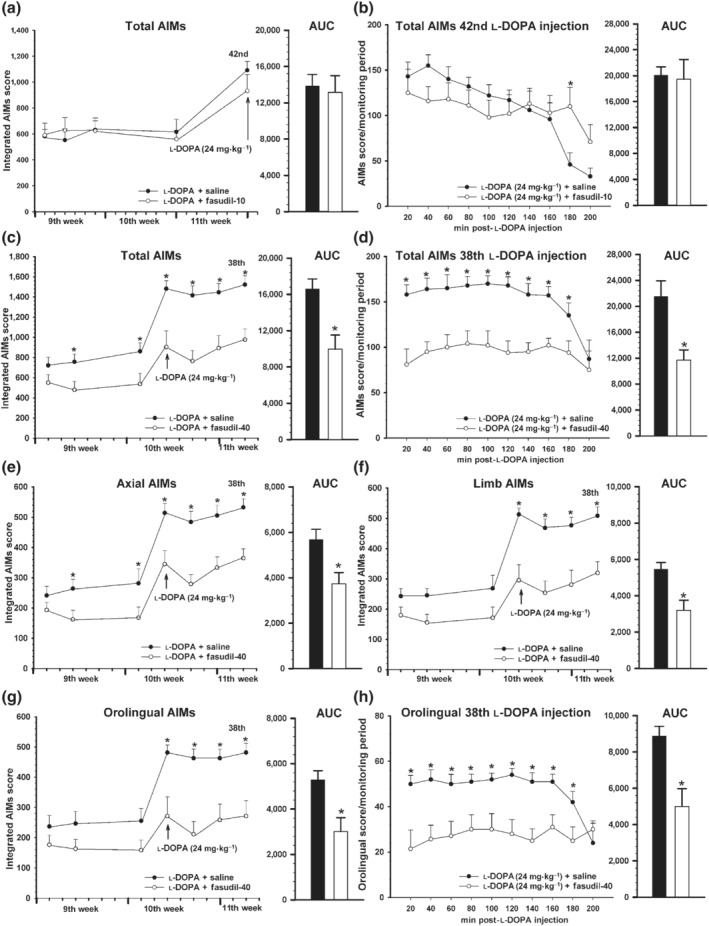FIGURE 10.

Effect of fasudil in rats with previously established l‐DOPA‐induced dyskinesia (LID) and showed as integrated AIMs (a, c, e–g) and time course of a single injection (b, d, h). Rats (n = 34) were treated with l‐DOPA only (6 mg·kg−1) for 3 weeks (sixth to eighth week; i.e. until LID were consistently established). Then (9th to 11th week) rats received l‐DOPA (6 mg·kg−1) + saline (black circles) or l‐DOPA + fasudil (10 or 40 mg·kg−1; white circles). Treatment with 10 mg·kg−1 of fasudil (n = 9) did not produce any significant effect on the dyskinetic behaviour relative to rats treated with l‐DOPA + saline (n = 9), even when treatment was prolonged up to the 42nd injection or the l‐DOPA dose was increased to 24 mg·kg−1 (arrow; a). The time course (200 min) of AIMs in the last injection (42nd injection; 24 mg·kg−1) is shown in (b). However, treatment with 40 mg·kg−1 of fasudil (n = 8) induced a significant reduction in LID relative to animals treated with l‐DOPA + saline (n = 8), including that produced by injection of high doses (24 mg·kg−1; arrow) of l‐DOPA (c–h). The decrease was observed in the AIMs total score (c, d) and in the different components analysed: axial (e), limb (f) and orolingual (g, h). The time course of AIMs (d) and orolingual component (h) of the last l‐DOPA injection of this experiment (38th injection; 24 mg·kg−1) is also shown. Data are means ± SEM. *P < 0.05. unpaired Student's t‐test (AUC) and two‐way ANOVA for repeated measures and Holm–Sidak post hoc test. AIMs, abnormal involuntary movements; LID, levodopa‐induced dyskinesia
